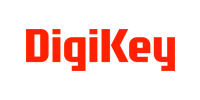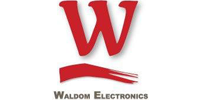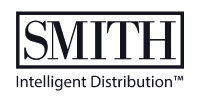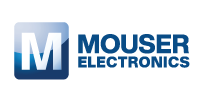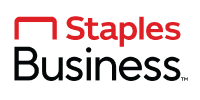Download this article in PDF format.
Companies looking for new ways to enhance their supply chain visibility isn’t a new trend, but it has picked up steam over the last couple of years. Realizing both the fragility of their networks and the opportunities that lie within them, more organizations are putting the time, resources and investment into supply chain visibility tools.
Visibility has been top of mind for supply chain managers for decades, but it wasn’t until the global pandemic exposed the cracks in these networks that “supply chain visibility” became an almost-household term. By SAP’s definition, supply chain visibility is the “strategic capability to monitor every component of the supply chain from end to end.” By providing real-time insights into inventory levels, shipment status, production schedules and other variables, visibility helps organizations develop more responsive, resilient supply chains.
“Supply chain visibility also provides a base of information that trading partners can use to work together, ensuring that all parties can act quickly and with informed confidence,” SAP continues. “This not only reduces risks and minimizes delays, but it’s essential for maintaining a competitive edge and ensuring customer loyalty.”
No wonder so many companies are chasing better visibility right now. They want fewer surprises, tighter control over inventory and faster responses amid constantly-shifting conditions. The good news is that technology platforms have matured to the point where end-to-end supply chain visibility is within reach for many. Also, the systems themselves now play well together, which means they can more readily share data and support better decision-making.
Take global track-and-trace technology, for example. These are the systems that monitor goods, shipments or assets as they move through a supply chain (from origin to destination) and then trace their history or journey. They basically help companies monitor the movement of their goods and assets throughout the supply chain, according to Thinxtra.
“Track and trace systems have become indispensable in logistics, offering a level of transparency that was previously unattainable,” the company adds. Organizations seem to recognize the value of those systems. According to Markets and Markets, the global track and trace solutions market is forecasted to exceed $12 billion by 2030—up from just $6.2 billion in 2024.
Markets and Markets says key drivers include stricter regulations, rising concerns about counterfeits and stronger demand for supply chain transparency. Companies are also adopting IoT, AI and blockchain to improve tracking accuracy and meet compliance needs. Growth in e-commerce is adding even more momentum. In response, solution vendors are rolling out more advanced tracking tools and adding features that give companies a clearer view of goods in motion.
Technology Steps Up
A new partnership between Arviem and Tech Mahindra shows how vendors are expanding visibility tools. Arviem is contributing its IoT-based cargo monitoring while Tech Mahindra adds global reach and analytics expertise. Together, they’re developing integrated platforms that give companies real-time insight into goods in motion and help them make better data-backed decisions. The companies say their work will strengthen cargo integrity, reduce waste and improve sustainability performance across complex supply chains.
Despite advancements like these, the 2D barcode remains the core technology behind most track-and-trace systems. Markets and Markets says the barcode holds the largest share of the market because it is affordable, easy to implement and stores far more data than traditional 1D codes. QR codes and other 2D formats scan quickly and accurately, which gives companies better real-time visibility and more reliable traceability.
“2D barcodes are widely adopted across various industries, including pharmaceuticals, consumer goods, and electronics, due to their ability to improve supply chain visibility, combat counterfeiting, and comply with regulatory requirements,” the research firm states. “Their scalability and flexibility also contribute to their growing popularity in the market.”
Fast Interpretations, Faster Actions
In Visibility is the Currency of Resilient Supply Chains, Simon Geale discusses the strategies companies are using to improve their supply chain resilience. All of them hinge on visibility.
“Multi-sourcing and regionalization help spread exposure across higher and lower-risk geographies,” Geale writes. “Flexible transportation models, such as balancing ocean and air freight or switching ports dynamically, give retailers options to avoid congestion and manage cost volatility.”
At the same time, digitalization and predictive analytics are increasingly critical. For example, real-time data supports better model disruption scenarios and helps companies optimize inventory placement and track goods across multiple modes of transport.
“Traceability solutions, once focused narrowly on compliance, are now a core resilience tool, offering transparency into carbon emissions, working conditions and supplier performance,” Geale points out. “Those who interpret and act on this data fastest can keep shelves stocked and customers satisfied despite volatility.”

